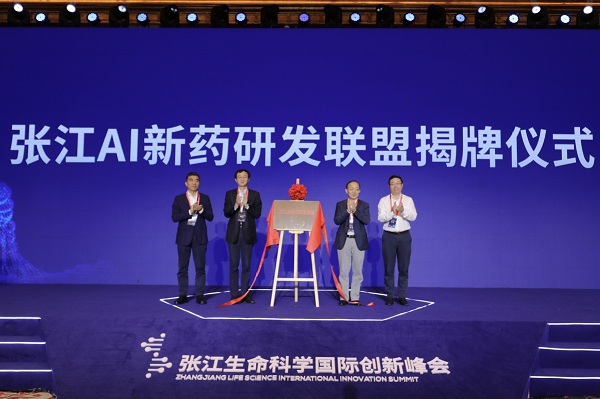Zhangjiang keeps its edge in creating biomedical innovations

An AI pharmaceutial R&D alliance was launched at the Zhangjiang Life Science International Innovation Summit in Shanghai, providing 24 biomedical projects with a total investment of 31.2 billion yuan. [Photo provided to chinadaily.com.cn]
The Zhangjiang National Innovation Demonstration Zone in Shanghai has been able to continue making progress in the biomedicine industry and attract investment despite the global downturn, local media reported.
As of October this year, Zhangjiang's biomedical investments represented about 8.21 percent of the total biomedical investments made in the country, up from 7.07 percent in 2021, according to official statistics.
The biomedical industry is one of Zhangjiang's three leading industries. It has experienced 30 years of rapid development, and is showing strong vitality and resilience.
The industry started to take off when a national biomedical industry base was built in Shanghai in 1996 with collaborative efforts at different levels. Three years later, the construction of the core area of Zhangjiang Pharma Valley began, attracting overseas talents returning to start businesses. The year 2005 saw multinational pharmaceutical companies including Roche, Novartis, Eli Lilly set up global R&D centers in Zhangjiang one after another. Foreign R&D buildings rose rapidly.
The city's competitive advantage in the biomedicine industry was quickly established and has been enhanced continuously ever since.
Zhangjiang embraced a number of reforms and introduced policies to boost the development in the sector since 2015. The drug inspection system reform and Pudong's legislation work to promote the industry all paid off. In 2019, Johnson & Johnson, Siemens, and Roche launched open innovation centers, setting off a new wave of open innovation.
Over the past three decades, Zhangjiang has brought together over 1,400 biomedical innovation companies. Among them, there are 20 regional headquarters of multinational companies, 34 R&D bases of the top 100 national pharmaceutical companies, 340 high and new-tech enterprises, and more than 100 CXO (Chief Experience Officer) enterprises. These companies altogether provide more than 70,000 jobs.
Zhangjiang also houses 11 national key laboratories.
Its preeminence in the discovery of new medicines is noticeable. It has made many breakthroughs, including making the first domestic PD-1 inhibitor, developing the first cell therapy drug, inventing the first coronary drug stent, and being the first to complete novel coronavirus protein crystal structure analysis.
According to the blueprint, during the 14th Five-Year Plan period (2021-25), Zhangjiang will invest 15 billion yuan ($2.12 billion) to support biomedical development and encourage related technological innovation.
Zhangjiang also plans to release 3,000 mu (200 hectares) of industrial space over the next three years to accommodate new biomedical businesses.








